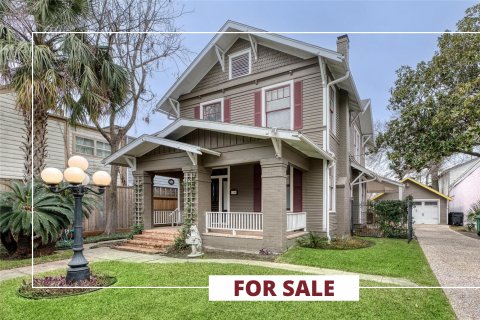"For What It’s Worth: Value Systems in Art since 1960," The Warehouse, Dallas, installation view with work by Marcel Broodthaers (foreground); Hanne Darboven, Yukinori Yanagi, Felix Gonzalez-Torres, and Cameron Rowland (background), on view through June 29, 2024 (Photo by Kevin Todora)
In an exclusive for PaperCity, digital arts contributor Peter Augustus Owen — a Dallas native and former gallerist who now runs the Augustus Owen Foundation, focusing on bringing international artists to Dallas for a residency program — interviews one of the state’s most important contemporary arts curators.
Peter Augustus Owen writes:
Inside a nondescript building on the border of far north Dallas sits one of our city’s greatest cultural assets: The Warehouse. It’s a space in which one can consistently find some of the most intriguing and thoughtfully presented art exhibitions in Texas, if not the entire United States.
A project set up in 2012 by Cindy and Howard Rachofsky, along with Amy and Vernon Faulconer, the space offers access to the collectors’ extensive trove of important contemporary works.
I recently sat down with The Warehouse curator Thomas Feulmer to chat about the newly opened exhibition titled “For What It’s Worth: Value Systems in Art since 1960,” which he co-curated with Holt/Smithson Foundation director, Lisa Le Feuvre.

Peter Augustus Owen: First and foremost, tell us about The Warehouse in Dallas. I’ve read that Howard Rachofsky has called it a “vessel” and a “laboratory.”
Thomas Feulmer: We use the word “project” — a lot like laboratory — to describe both the space and the curatorial and education activities that take place at The Warehouse.
The Warehouse in Dallas was initiated by Howard and Cindy Rachofsky and the late Vernon Faulconer to make their collections available to curators, scholars, critics, and students, and to open new dialogues about postwar Modern and contemporary art. The building is made up of our art storage, an extensive library, and the exhibition space, which is about 18,000 square feet. We now present two exhibitions a year, and they are always grounded in The Rachofsky Collection, yet often complemented by loans from other institutions and private collections.
Education has always been a priority. We’re open to the public every Saturday, 12 – 5 pm, and we offer a range of education programs. We also publish catalogues connected to our exhibitions and research papers presented during our Graduate Symposium.

PAO: The “For What It’s Worth” exhibition is a massive undertaking — a total of 80 artists and more than 100 works — how do you start putting something like this together?
TF: The starting point for the exhibition was Howard’s interest in creating an exhibition around some of the more conceptually oriented artists in his collection — artists like Jiro Takamatsu, Giulio Paolini, John Latham, Judy Chicago, Fred Wilson, Sherrie Levine, Mona Hatoum, Felix Gonzalez-Torres, and Mario Merz. We’ve invited outside curators to offer new perspectives on the collection since 2017, and Lisa Le Feuvre was a natural choice to co-curate the exhibition with me since I’d worked with her to bring Nancy Holt’s work into my 2022 exhibition “Sound as Sculpture,” and because she’s curated shows on Latham, Takamatsu, and Merz, who are so important to The Rachofsky Collection.
As Lisa and I were talking about conceptual art and its history, we were really drawn to the importance of systems during this era and its influence on later generations of artists. Now, so many of these artists think about systems not as abstract entities, but as things that communicate and create values within a society.
The guiding question of the exhibition is: How can we attempt to understand the value systems that surround us and guide our lives?
The question of value systems is also a way to think about all the friction of the last decade where virtually every value system around us is being challenged, interrogated, destroyed, or rebuilt. Sometimes all at once.

PAO: Are all the works included in the exhibition part of The Rachofsky Collection?
TF: Approximately 50-60% of the works in the exhibition are in The Rachofsky Collection. We wanted to bring these works into conversation with artists from other generations and geographies, and to do this we borrowed from local collectors, museums, artists, and galleries. It’s a truly international way to think about the idea of value systems.
PAO: What works are you most excited about exhibiting?
TF: That’s kind of like asking a parent to choose their favorite child! But some of the video installations are really thrilling to experience in person because they’re not just visual – they are true physical, bodily experiences in terms of sound and space.
One of the things Lisa and I are really passionate about is that an exhibition has to be a physical experience. There has to be a reason for you to show up and spend your time moving around and living with all of these artworks.
A piece that I’ve been spending a lot of time with because I only saw it on my computer before we installed it is Elizabeth Price’s installation THE TEACHERS. It’s a video installation where the sound is a very powerful, physical component of the work. You can really feel the room, your body, and even the seating under you vibrating at certain points.
There’s also a video work by Sharon Hayes, Ricerche: two, where she interviews two DFW women’s tackle football teams: the Arlington Impact and the Dallas Elite Mustangs. It’s a powerful work in the show because it really looks at the values of this area of Texas where football is so important to our identity. The work really questions how we understand things like sports, gender, the body, and even the idea of a team… ideas that have such specific associations in DFW.

PAO: The title — “For What It’s Worth: Value Systems in Art since 1960” — has a bit of a double-edged meaning. Can you expand on that?
TF: “For what it’s worth” … it’s kind of a funny, throwaway phrase that people use a lot in conversation. But it also marks a kind of contradictory or subversive point of view … a sly way of introducing a counter argument. Or a way of questioning what’s assumed to be true.
We love that it was a play on the word “worth” in a show about values, but that it also suggested a questioning of a dominant point of view that already exists, which is what a lot of artists in the show are doing.
PAO: Coming from a gallery background myself, when viewing exhibitions, I always pay special attention to works that look the most challenging to install. What was the most intense for this show?
TF: A show that tackles the idea of values systems will inherently have works in a wide range of media – video installation, performance, organic materials like oranges and palm trees that must be maintained or replaced, historical works that are reproduced, etc. There were so many challenging pieces to install, but Lisa and I love boundary-expanding artists, so we really reveled in these works.
One unique installation that drew us out into the community is Chris Burden’s Scale Model of the Solar System. It’s a model of the solar system in size and distance. The sun is about the size of a basketball, and it’s installed in the back corner of our storage. Each of the planets is installed at the distance or their orbit away from the sun. Four of the planets are in The Warehouse, and the rest are installed at locations in the neighborhood. Pluto is installed about a mile away at Greenhill School. (The work was made in 1983 when Pluto was a still classified as a planet.)
We made a website for the work to guide people out into the community to find the other planets and reflect on ideas like outer space, astronomy, and even art as an idea that leaves a museum.

Peter Augustus Owen: Phaidon published a beautiful book about the “For What It’s Worth” exhibition. Can you speak to your and Lisa’s approach to the catalogue?
Thomas Feulmer: We think of the catalogue more as a conversation that happens alongside the exhibition, rather than strict documentation of the exhibition. So with this in mind, the text in the front of the catalog is not an essay, but rather a conversation between me and Lisa, and after that a plate section with images of all of the work in the exhibition and some text about the show’s themes.
The component of the catalogue we’re really excited about is The Value Systems Reader. To make the section, we ask all 55 living artists in the show to select a text connected to their work or to ideas around values and systems. Almost all of the artists responded, and Lisa and I also chose a text. We see this as the beginning of over 50 conversations that extend out from the exhibition into the world. The texts range from complex theoretical essays to artist interviews to poetic, diary like texts written by the artists. It’s really thrilling to see such a wide range of approaches to thinking about the work and ideas in the show.
If anyone wants a way into (or out of!) the exhibition, they’ll find something in the Reader that gets them excited about these ideas.

PAO: I know that you have a studio art background, but what lead you to your current position as a curator?
TF: My background includes time as an artist and an educator — my degrees are in studio art — but I’ve always loved organizing shows and doing research. This ultimately led me to the role of curator.
I love the research and the preparation that goes into an exhibition as you plan out an experience for the visitor that takes place over time and across the space the galleries. And I love that you’re dealing with complex, abstract ideas as well as micro, problem-solving level decisions. It’s so exciting to see it all to come together.
PAO: What can we look forward to this year at The Warehouse in Dallas? Any upcoming projects you’re particularly excited about?
TF: At the moment I’m focused on getting people to see the exhibition and the conversations that I hope it will generate around value systems. I have a few ideas for future shows, but they’re still simmering. The fall exhibition at The Warehouse will be curated by the Dallas Museum of Art’s contemporary curators and will feature work that was acquired by the DMA with the funds raised over the last 24 years at the TWO X TWO for AIDS and Art event. This exhibition coincides with the 25th — and sadly the last — year of TWO X TWO.
“For What It’s Worth: Value Systems in Art since 1960” is on view at The Warehouse through Saturday, June 29. Find more information here. Order the catalogue here.












































_md.jpg)






_md.jpg)






_md.jpg)











_md.jpg)





















_md.jpg)


_md.jpg)
_md.jpg)







_md.jpg)
